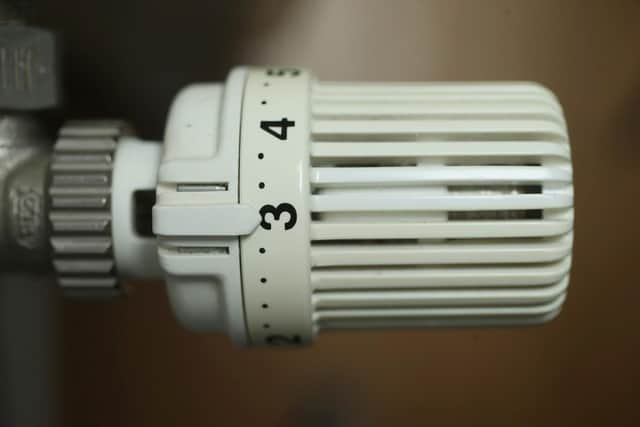How can you bleed your radiators and reduce energy bills? Energy price cap increase prompts response from experts
There are small things we can do in our homes to offset the effect of the increase in energy bills and will ultimately reduce these bills. One of the simplest things is bleeding our radiators.
A well-bled radiator can give out as much heat as possible by removing air bubbles that have been trapped in the piping system. As a result, this massively improves the heating efficiency of your home, which in the long term will save you money.
Advertisement
Hide AdAdvertisement
Hide AdYou will know that your radiators need bleeding by simply touching them while they’re switched on; if they feel cooler in places, it’s likely you have air in them that needs releasing. Also if you hear noise when your heating is on, this can be a sign of air in the system.


The process of bleeding a radiator might seem alarming, but it is actually very simple.
An expert team at WD-40 has put together a 12-step guide for how to bleed your radiators and ensure your heating is as efficient as possible.
All you need is a radiator key or flathead screwdriver, a rag, thick gloves and a container.
Step 1: Turn your heating on
Advertisement
Hide AdAdvertisement
Hide AdThe first step is simple; turn on your heating, then go round and make sure that your radiators are turned up fully.
Step 2: Touch your radiators and feel for cold spots
Put on a thick pair of gloves to avoid burning your hands when touching the radiator, whilst also enabling the heat to come through, and feel for any cold spots on each of the radiators.
Step 3: Diagnose which radiators need bleeding first
You should check each radiator at the same time, as one may need to be bled more than the other, but ideally you want to start with the ones on the ground floor (if applicable).
Step 4: Switch off your central heating
Make sure you keep your radiator intake valves open, but also make sure you have turned off your heating system before bleeding your radiators.
Step 5: Let your radiators cool down
Advertisement
Hide AdAdvertisement
Hide AdPut your gloves back on and re-check your radiators to see if they are still warm. Don’t try to bleed them when they are still warm.
Step 6: Locate the bleed valve
The bleed valve will either be on the left or right side of the radiator at the top and is usually in the shape of a circle.
Step 7: Preparation
Ideally, you want to put old rags around the radiator to protect the carpet in case water escapes.
You also want to make sure that you have a correct radiator key or a flathead screwdriver to open your valve.
Step 8: Loosen the valve
Advertisement
Hide AdAdvertisement
Hide AdInsert the radiator key or flathead screwdriver into the valve into the square groove. Turn on the bleed screw anti-clockwise for one quarter to a half turn until you hear a hissing sound as the air escapes.
Step 9: Listen to the air and wait for it to stop
Once the air has been removed, a small amount of water might still come out. Catch this in a container or with some rag until it comes out in a steady stream rather than in little bursts. This is a sign that the air has been released.
Step 10: Close and secure the bleed valves
Use the key or screwdriver to tighten the bleed screw in a clockwise direction and use a piece of cloth to dry the pipes and stop rust forming.
Step 11: Turn on the heating
Once the radiators have been bled and all the valves have been securely fastened shut, you can turn the heating back on. After it has been on for 20 minutes or so, go around and check the heat as per step two.
Step 12: Check the boiler pressure
It is recommended that you also check the boiler pressure as removing air can cause it to drop.